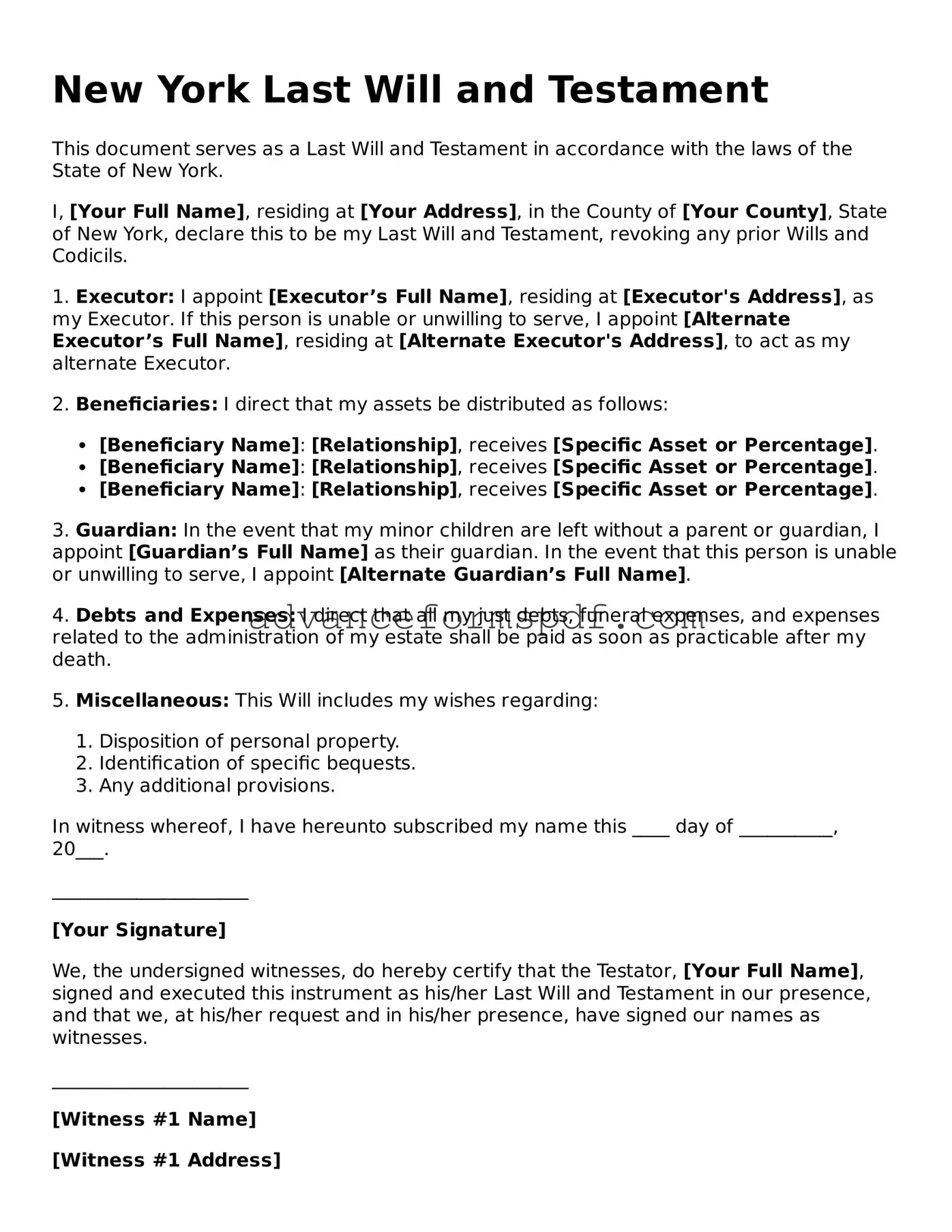New York Last Will and Testament
This document serves as a Last Will and Testament in accordance with the laws of the State of New York.
I, [Your Full Name], residing at [Your Address], in the County of [Your County], State of New York, declare this to be my Last Will and Testament, revoking any prior Wills and Codicils.
1. Executor: I appoint [Executor’s Full Name], residing at [Executor's Address], as my Executor. If this person is unable or unwilling to serve, I appoint [Alternate Executor’s Full Name], residing at [Alternate Executor's Address], to act as my alternate Executor.
2. Beneficiaries: I direct that my assets be distributed as follows:
- [Beneficiary Name]: [Relationship], receives [Specific Asset or Percentage].
- [Beneficiary Name]: [Relationship], receives [Specific Asset or Percentage].
- [Beneficiary Name]: [Relationship], receives [Specific Asset or Percentage].
3. Guardian: In the event that my minor children are left without a parent or guardian, I appoint [Guardian’s Full Name] as their guardian. In the event that this person is unable or unwilling to serve, I appoint [Alternate Guardian’s Full Name].
4. Debts and Expenses: I direct that all my just debts, funeral expenses, and expenses related to the administration of my estate shall be paid as soon as practicable after my death.
5. Miscellaneous: This Will includes my wishes regarding:
- Disposition of personal property.
- Identification of specific bequests.
- Any additional provisions.
In witness whereof, I have hereunto subscribed my name this ____ day of __________, 20___.
_____________________
[Your Signature]
We, the undersigned witnesses, do hereby certify that the Testator, [Your Full Name], signed and executed this instrument as his/her Last Will and Testament in our presence, and that we, at his/her request and in his/her presence, have signed our names as witnesses.
_____________________
[Witness #1 Name]
[Witness #1 Address]
_____________________
[Witness #2 Name]
[Witness #2 Address]
